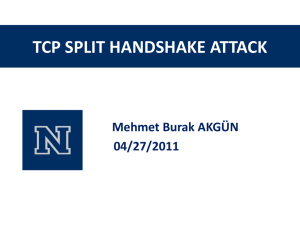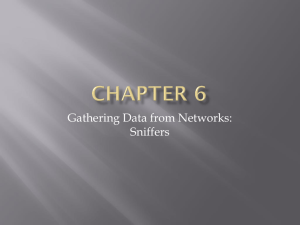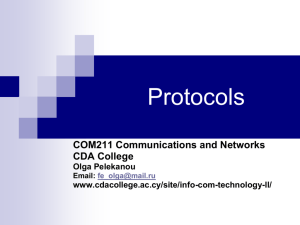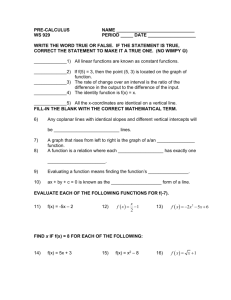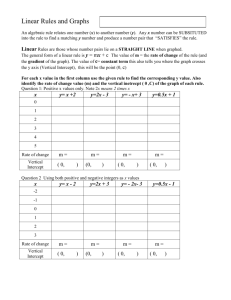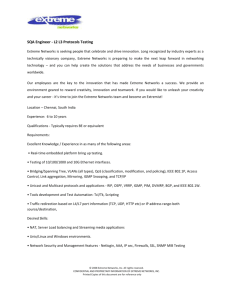CS 433
advertisement
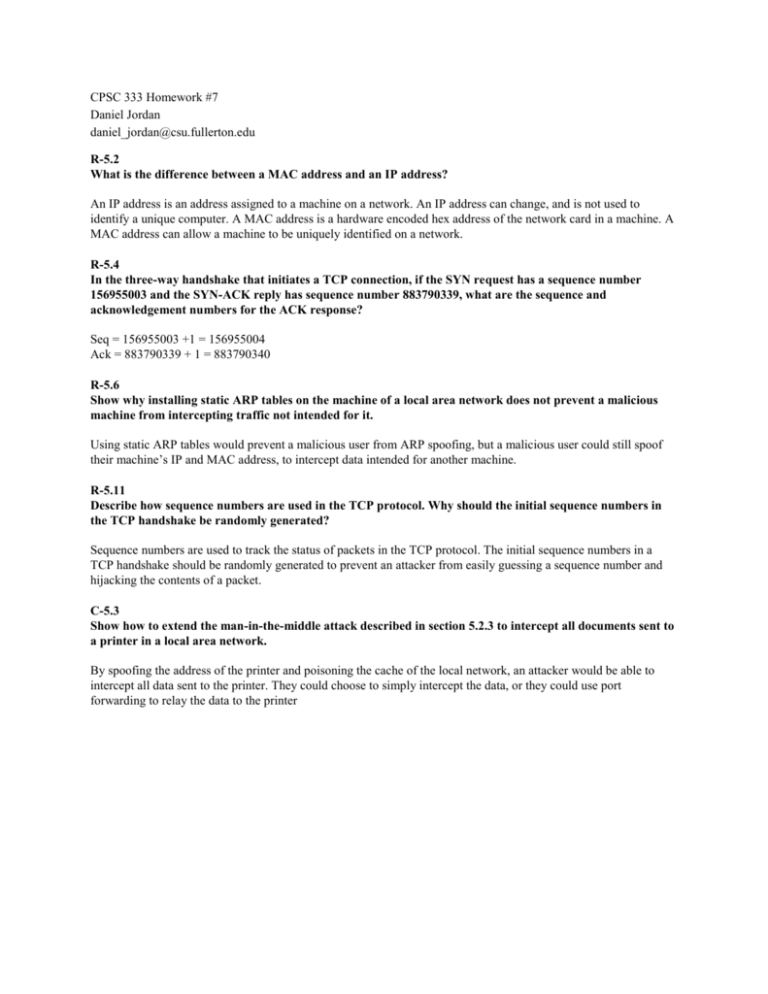
CPSC 333 Homework #7 Daniel Jordan daniel_jordan@csu.fullerton.edu R-5.2 What is the difference between a MAC address and an IP address? An IP address is an address assigned to a machine on a network. An IP address can change, and is not used to identify a unique computer. A MAC address is a hardware encoded hex address of the network card in a machine. A MAC address can allow a machine to be uniquely identified on a network. R-5.4 In the three-way handshake that initiates a TCP connection, if the SYN request has a sequence number 156955003 and the SYN-ACK reply has sequence number 883790339, what are the sequence and acknowledgement numbers for the ACK response? Seq = 156955003 +1 = 156955004 Ack = 883790339 + 1 = 883790340 R-5.6 Show why installing static ARP tables on the machine of a local area network does not prevent a malicious machine from intercepting traffic not intended for it. Using static ARP tables would prevent a malicious user from ARP spoofing, but a malicious user could still spoof their machine’s IP and MAC address, to intercept data intended for another machine. R-5.11 Describe how sequence numbers are used in the TCP protocol. Why should the initial sequence numbers in the TCP handshake be randomly generated? Sequence numbers are used to track the status of packets in the TCP protocol. The initial sequence numbers in a TCP handshake should be randomly generated to prevent an attacker from easily guessing a sequence number and hijacking the contents of a packet. C-5.3 Show how to extend the man-in-the-middle attack described in section 5.2.3 to intercept all documents sent to a printer in a local area network. By spoofing the address of the printer and poisoning the cache of the local network, an attacker would be able to intercept all data sent to the printer. They could choose to simply intercept the data, or they could use port forwarding to relay the data to the printer





